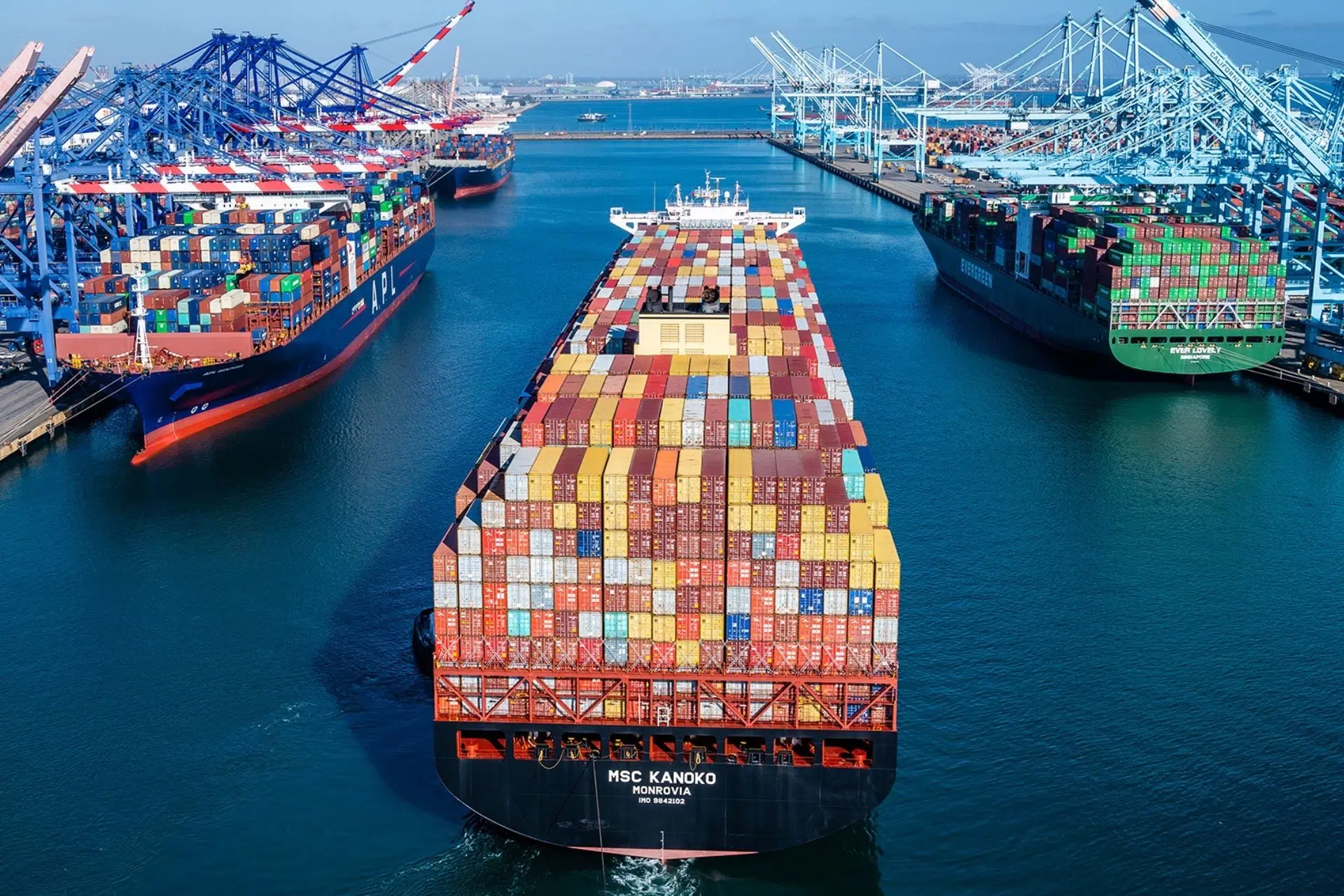Inbound cargo volume at the nation’s major container ports should gain through spring as imports grow despite new supply chain challenges, according to the Global Port Tracker report released by the National Retail Federation and Hackett Associates.
Major ports in the United States covered by Global Port Tracker handled 1.96 million TEU in February, the latest month for which final numbers are available. That was down 0.3% from January but up 26.4% from the same month in 2023 when many Asian factories were closed for the Lunar New Year holiday. Ports haven’t reported March’s numbers yet, but Port Tracker projected volume for the month to be 1.8 million TEU, down 7.8% from February because of the Lunar New Year impact and up 11% year over year. Port Tracker forecast April volume to come in at 1.93 million TEU, up 8.4% year over year, and May volume at 2.04 million, up 5.5% and the highest level since 2.06 million in October. The expectation for June is 2 million TEU, up 8.9%; July, 2.04 million TEU, up 6.6%; and August, 2.09 million TEU, up 6.9%.
Port Tracker anticipates volume in the first half of 2024 to total 11.7 million TEU, up 11% from the timeframe in the in the previous year. Imports during 2023 totaled 22.3 million TEU, down 12.8% from the prior year.
After a container ship struck a critical bridge over the Patapsco River on March 26, the Port of Baltimore has been closed to vessel traffic. Global Port Tracker’s national totals don’t include Baltimore because its data is reported later than other ports, but the shutdown is having a regional impact with cargo that would normally go there is being diverted to other East Coast ports. The port handled 48,000 twenty-foot equivalent units, defined as one 20-foot container or its equivalent, in January.
In the meantime, carriers have rerouted around the Red Sea and Suez Canal after attacks on ships in the region earlier this year by Yemin-based forces. They’ve also added vessels and increased vessel speed to make up for longer voyages.
“U.S. imports are continuing to increase despite another disruption impacting U.S. ports,” Jonathan Gold, NRF vice president for supply chain and customs policy. “As retailers have adjusted to limits on the use of the Panama Canal and the Red Sea, we now face the shutdown of the Port of Baltimore to vessel traffic. While it is not expected to have a national impact, the tragic collapse of the Francis Scott Key Bridge shows the ongoing need for flexibility and resiliency in every company’s supply chain. We are monitoring the situation closely as retailers who are affected adjust their shipping plans to ensure cargo is getting to where it needs to be.”
Hackett Associates founder Ben Hackett added, “The Baltimore bridge accident will likely shift container imports and exports to New York/New Jersey, Virginia and other surrounding ports until a shipping channel is cleared, perhaps as soon as within a couple of months,” .
Although the supply chain to the U.S. has remained solid despite challenges, Hackett warned that more pressures on capacity could have a significant impact the market.
Global Port Tracker provides historical data and forecasts for the U.S. ports of Los Angeles/Long Beach, Oakland, Seattle and Tacoma on the West Coast, New York/New Jersey, Port of Virginia, Charleston, Savannah, Port Everglades, Miami and Jacksonville on the East Coast, and Houston on the Gulf Coast.





